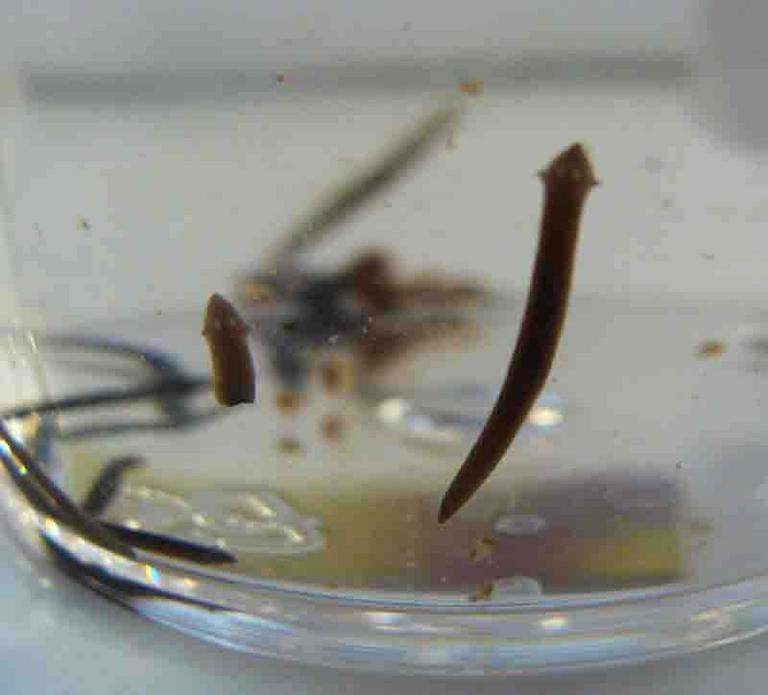

The average adult human body is about 50 to 60 % water. It occurs in the tissues, such as bones, muscles, adipose, blood, and practically everywhere. The water content of a human body is referred to as body water. 2 The cell contains water (together with ions, solutes, and other molecules) in its cytosol. Water molecule is the most abundant molecule inside a cell, accounting for about 70% or more of the total cell mass.

The interactions of water with polar and nonpolar molecules are crucial to the function and structure of the lipid-bilayer plasma membrane. They are said to be nonpolar and water does not readily dissolve them. Conversely, those that are not readily soluble in water are described as hydrophobic. Molecules or substances that are readily soluble in water are described as hydrophilic. Water is also important in dissociating compounds into ions. It is also because of the water’s polarity that it can interact with ions and other polar molecules. Since water molecules are polar, they can form transient hydrogen bonds between them and thereby help in the formation of biomolecular structures such as DNA and proteins. In plants, water is an essential requirement in photosynthesis. It also acts as an important reactant in certain biochemical processes. The water may act as a transport medium to convey these substances to various parts of the body. DNA, proteins, and polysaccharides), gases, vitamins, etc. Water is one of the substances essential to life. For instance, the ocean absorbs much of solar radiation during the day and then dissipates it into the atmosphere at night. The high specific heat of the water helps keep the temperature on Earth suitable for life. Specific heat refers to the amount of energy (in calories or joules) required to raise the temperature of one gram of a pure substance by 1 degree Celsius. Water has the second highest specific heat capacity (after ammonia). Because of this, water has the ability for capillary action, the tendency to move up a narrow tube against gravity, a property relied upon by vascular plants, such as trees. Insects that can walk on water are aided to do so via the high surface tension of water. These properties are essential to plants by slowing down water loss from the leaf stomata. Water has low viscosity, which means that it has low resistance to flow. This means that the water molecules have a greater attraction with each other (due to cohesion) than with the molecules in the air (due to adhesion). Water has relatively high surface tension. Thus, water has the ability to dissociate and ionize molecules. The slightly negative oxygen attracts cations whereas the slightly positive hydrogen attracts anions. Its polarity makes it an excellent solvent for many substances. Water is a polar molecule due to its oxygen that has a slight negative charge while its hydrogens have a slight positive charge. Water molecules stick to one another by a hydrogen bond. Apart from the covalent bond, it forms a transient hydrogen bond with a nearby water molecule. This results in a partially positive pole and a partially negative pole (thus, making water a polar molecule). Each of these hydrogen atoms is attached to the oxygen by a covalent bond.


A polar moleculeĪ water molecule is comprised of one centrally-located oxygen and two relatively smaller hydrogen atoms bound to it. The clouds, in turn, provide rainwater to living organisms. The water vapor on Earth is carried by convection into the atmosphere. Water has a high heat of vaporization and its gaseous state is called water vapor. Consequently, organisms can still manage to live down below the icy surface of oceans and seas. This causes the solidified water (ice) to float above the surface. Thus, it becomes less dense upon freezing. Water expands (rather than shrink) at a temperature less than 4 ☌. Water, when solid, is referred to as ice. It is also transparent, making it possible for aquatic plants to live in since sunlight can penetrate through. It is a tasteless and almost odorless liquid at ambient temperature and pressure. Water is a liquid under standard conditions. Some of the distinctive properties of water are listed below. It is one of the major inorganic compounds of biological importance the others are carbon dioxide, oxygen, and mineral substances and salts. Water is regarded as the universal solvent primarily due to its chemical and physical properties.


 0 kommentar(er)
0 kommentar(er)
